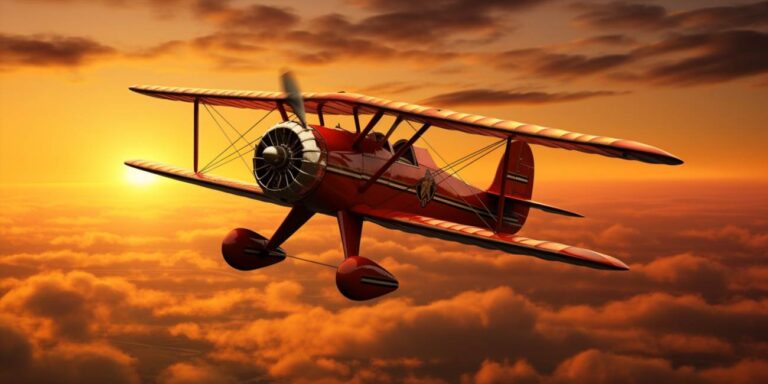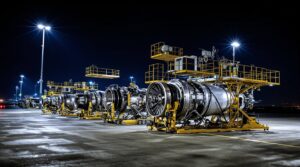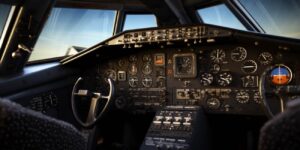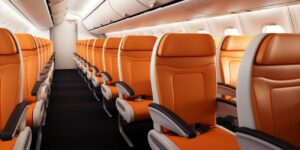The story of the airplane’s creation is intricately woven with the exploits of the Wright brothers, Wilbur and Orville, who etched their names in the chronicles of aviation history. Born in the late 19th century, these two bicycle mechanics from Dayton, Ohio, harbored a fervent passion for flight. Their journey began with meticulous research, experimentation, and an unyielding belief that humans could conquer the skies.
In the early 20th century, the brothers embarked on a series of groundbreaking tests and prototypes at Kitty Hawk, North Carolina. The Wrights’ pioneering approach involved refining their understanding of aerodynamics through tireless trial and error. Their commitment to precision and scientific principles set them apart in the race to conquer the air.
The breakthrough came on December 17, 1903, when the Wright Flyer, a biplane with a wingspan of 40 feet, achieved powered and controlled flight. This historic event, lasting a mere 12 seconds but spanning 120 feet, was a watershed moment that heralded the era of aviation. The airplane had been born, forever changing the course of transportation, commerce, and global connectivity.
Contrary to popular belief, the journey to inventing the airplane was not a solitary pursuit. A plethora of inventors and aviators, such as Santos-Dumont and Gustave Whitehead, contributed to the development of aviation. However, the Wright brothers’ meticulous documentation and commitment to scientific principles secured their place in history as the pioneers who ushered in the age of flight.
Their achievement, though celebrated, did not come without challenges. The brothers faced skepticism and disbelief from the scientific community and the public alike. Yet, through a combination of engineering brilliance and unshakeable resolve, they transformed skepticism into admiration and paved the way for the rapid evolution of aviation technology.
As we marvel at the modern marvels of aviation today, it’s essential to reflect on the extraordinary efforts and sacrifices made by those who dared to dream of conquering the skies. The invention of the airplane is a testament to the human spirit’s boundless potential, where dreams take flight against all odds, leaving an indelible mark on the pages of history.
The wright brothers and the first powered flight: how bicycle makers took to the skies
The story of the Wright brothers and their pioneering journey into the world of aviation is a captivating tale of innovation and determination. Born and raised in Dayton, Ohio, Orville and Wilbur Wright were bicycle makers by trade. Little did they know that their passion for bicycles would eventually propel them into the skies.
Their fascination with flight began with the works of aviation pioneers like Octave Chanute and Samuel Langley. The brothers immersed themselves in aeronautical literature and experimented with gliders to understand the fundamental principles of flight. In 1900, they tested their first successful glider at Kitty Hawk, North Carolina.
Undeterred by setbacks, the Wright brothers focused on developing a powered aircraft. The pivotal moment came in 1903 when they designed the Wright Flyer, the world’s first powered, heavier-than-air machine. At the heart of their achievement was the propeller design they developed, which remains a fundamental component of modern aircraft.
Their aircraft was equipped with a 12-horsepower engine, and on December 17, 1903, history was made at Kitty Hawk. In a flight lasting only 12 seconds, Orville piloted the Wright Flyer, covering a distance of 120 feet. This monumental achievement marked the birth of powered flight and changed the course of history.
It’s fascinating to note that the Wright brothers’ background in bicycle mechanics played a crucial role in their aeronautical success. Their understanding of balance, control, and stability from bicycle design influenced their approach to flight. They even referred to the aircraft’s control system as “wing warping,” a concept inspired by their bicycle experiences.
Despite their groundbreaking success, the Wright brothers faced skepticism from the scientific community. It wasn’t until 1908, when they showcased their flying machine in France, that they gained widespread recognition. The brothers established the Wright Company to manufacture aircraft and continued to refine their designs.
The legacy of the Wright brothers extends beyond their achievements in flight. Their contributions to aviation laid the foundation for the aerospace industry as we know it today. The Wright Flyer, housed in the National Air and Space Museum, stands as a testament to their indomitable spirit and the transformative power of human ingenuity.
Other early aviation pioneers who paved the way: innovators who moved flight forward
During the dawn of aviation, a cohort of early aviators emerged as pioneers, relentlessly pushing the boundaries of the sky. These innovators delved into the intricacies of aerodynamics, experimenting with novel concepts to unlock the secrets of flight. One such luminary in this saga of exploration was Otto Lilienthal, a German engineer often hailed as the “Glider King.”
Lilienthal’s profound contributions to aviation were rooted in his meticulous study of bird flight. His fascination with avian motion led him to design and construct a series of groundbreaking gliders. Through countless trials and errors, Lilienthal mastered the art of wing warping, a technique that involved altering the shape of the wings to control the aircraft’s trajectory.
As the 19th century turned into the 20th, the Wright brothers, Orville and Wilbur, etched their names indelibly in the annals of aviation history. Renowned innovators, the Wright brothers elevated flight to new heights with their unwavering determination and ingenious designs. They systematically applied the principles of aerodynamics to their creations, refining their understanding of lift, drag, and control surfaces.
The Wright brothers’ triumph lay not only in their powered flight but also in their ability to marry theory with practice. Their pivotal invention, the aircraft control system, allowed for precise manipulation of the aircraft’s orientation. This marked a departure from traditional wing warping, introducing a more sophisticated approach to maneuvering in the air.
Another luminary in the realm of early aviators was Samuel Langley, an American astronomer and inventor. Langley’s fascination with flight led him to experiment with powered aircraft, culminating in the creation of the Aerodrome series. Although Langley faced setbacks, his work laid crucial groundwork for future aviation endeavors.
Across the Atlantic, the French aviator Gabriel Voisin played a pivotal role in advancing aviation technology. Voisin, a trailblazer in his own right, delved into the complexities of aerodynamics and contributed significantly to the development of military aircraft. His innovative designs, often incorporating unconventional features, set the stage for the future evolution of aviation.
The narrative of early aviators is incomplete without acknowledging the daring exploits of Lawrence Hargrave, an Australian engineer and inventor. Hargrave’s groundbreaking work with box kites laid the foundation for modern aircraft design. His understanding of aerodynamic forces, coupled with ingenious experiments, fueled the progression of aviation technology.
In the relentless pursuit of flight, these innovators propelled the world into a new era. Their experiments with aerodynamics, advancements in control systems, and mastery of wing warping paved the way for the aviation marvels that grace our skies today.
Modern commercial air travel: carrying passengers quickly and safely around the globe
Modern passenger airlines have revolutionized global aviation history, providing a swift and secure means of carrying passengers across vast distances. At the heart of this innovation lies the remarkable jet engine, a propulsion marvel that propels these flying giants with unparalleled speed.
The introduction of jet engines marked a pivotal moment in aviation history. Unlike traditional propeller-driven aircraft, jet engines operate on the principle of jet propulsion, expelling high-speed exhaust gases to generate forward thrust. This breakthrough not only catapulted passenger airlines into the era of high-speed travel but also paved the way for pressurized cabin designs.
The concept of a pressurized cabin is a critical component in ensuring the comfort and safety of passengers during flights. At high altitudes, the atmosphere is thin, and maintaining a pressurized cabin allows individuals to breathe comfortably. This engineering feat is achieved through a system that regulates the air pressure inside the aircraft, creating a controlled environment akin to lower altitudes.
As passenger airlines soared to new heights, the integration of pressurized cabin technology became indispensable. It not only prevents the discomfort associated with changes in air pressure but also safeguards against potential health risks. Without the innovation of pressurized cabins, long-haul flights across continents would be logistically challenging and physically taxing for passengers.
The synergy between jet engines and pressurized cabins exemplifies the pinnacle of modern commercial air travel. This dynamic duo enables passenger airlines to operate efficiently, providing a seamless and secure journey for those traversing the globe. The integration of these technologies has not only redefined the travel experience but has also propelled aviation history into an era characterized by speed, accessibility, and comfort.
Delving deeper into the mechanics of jet engines, they are typically powered by turbines that compress and ignite fuel, creating a powerful thrust. This continuous cycle allows aircraft to reach astonishing speeds, significantly reducing travel time. The advent of these high-performance engines has not only made long-distance flights more feasible but has also opened up new horizons for global connectivity.
The evolution of aviation history mirrors the relentless pursuit of advancements in jet engine technology. From the pioneering days of jet travel to the current era of cutting-edge propulsion systems, the quest for efficiency, fuel economy, and environmental sustainability has been a driving force in shaping the trajectory of passenger airlines.






